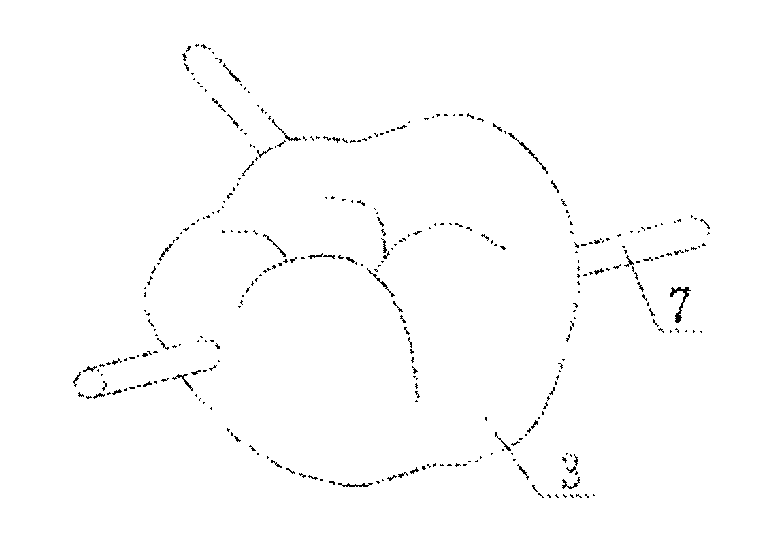Dental all-ceramic restoration and manufacturing method thereof
a technology of all-ceramic restoration and manufacturing method, which is applied in the field of dental ceramic materials and engineering, can solve the problems of increasing the workload of technicians, reducing the stability and precision of milling, and affecting the success rate of production, so as to improve achieve high surface smoothness. , the effect of improving the successful rate of production
- Summary
- Abstract
- Description
- Claims
- Application Information
AI Technical Summary
Benefits of technology
Problems solved by technology
Method used
Image
Examples
example 1
[0124]For the case and restorative plan: A defect posterior tooth was planed to be restored with a zirconia ceramic single crown.
[0125]As shown in FIG. 3, the wet-forming manufacturing method of the dental all-ceramic restoration comprising the steps of:
[0126]Step 1: Tooth preparation according to the dental preparation principle for all-ceramic crown. Occlusal reduction 1.0 mm˜1.5 mm, axial surface reduction 0.8˜1.0 mm, shoulder width 0.3˜0.5 mm, axial divergent degree of 6˜8°, rounded point angle and line angle.
[0127]Step 2: Making the optical models by directly scanning the upper and the lower dentitions with 3 Shape TROIS intra-oral scanner.
[0128]Step 3: Generating the digital wax pattern of the all-ceramic dental restoration according to the optical models of the dentitions obtained in step 2 as the data source by 3 Shape DentalDesigner™ software. An enlargement ratio was considered corresponding to the sintering shrinkage rate of the ceramic.
[0129]Step 4: Milling the mould bla...
example 2
[0134]For the case and restorative plan: A defect posterior tooth was planned to be restored with a zirconia / alumina ceramic single crown.
[0135]As shown in FIG. 3, the wet-forming manufacturing method of the dental all-ceramic restoration comprising the steps of:
[0136]Step 1: Tooth preparation according to the dental preparation principle for zirconia / alumina all-ceramic crown. Occlusal reduction 1.0 mm˜1.5 mm, axial surface reduction 0.8˜1.0 mm, shoulder width 0.3˜0.5 mm, axial divergent degree of 6˜8°, rounded point angle and line angle.
[0137]Step 2: Taking the impressions of the upper and the lower dentitions in clinic and then scanning them with 3 Shape D810 scanner. Transforming them into optical models via 3 Shape DentalDesigner™ software.
[0138]Step 3: Generating the digital wax pattern of the all-ceramic dental restoration according to the optical models of the dentitions obtained in step 2 as the data source by 3 Shape DentalDesigner™ software. An enlargement ratio was consi...
example 3
[0144]For the case and restorative plan: A defect posterior tooth was planned to be restored with an alumina ceramic single crown.
[0145]As shown in FIG. 4, the wet-forming manufacturing method of the dental all-ceramic restoration comprising the steps of:
[0146]Step 1: Tooth preparation according to the dental preparation principle for alumina all-ceramic crown. Occlusal reduction 1.0 mm˜1.5 mm, axial surface reduction 0.8˜1.0 mm, shoulder width 0.3˜0.5 mm, axial divergent degree of 6˜8°, rounded point angle and line angle.
[0147]Step 2: Making the optical models by directly scanning the upper and the lower dentitions with 3 Shape TROIS intra-oral scanner.
[0148]Step 3: Generating the digital wax pattern of the all-ceramic dental restoration according to the optical models of the dentitions obtained in step 2 as the data source by 3 Shape DentalDesigner™ software. A certain enlarge ratio was considered corresponding to the sintering shrinkage rate of the ceramic.
[0149]Step 4: Milling t...
PUM
| Property | Measurement | Unit |
|---|---|---|
| porosity | aaaaa | aaaaa |
| porosity | aaaaa | aaaaa |
| porosity | aaaaa | aaaaa |
Abstract
Description
Claims
Application Information
 Login to View More
Login to View More - R&D
- Intellectual Property
- Life Sciences
- Materials
- Tech Scout
- Unparalleled Data Quality
- Higher Quality Content
- 60% Fewer Hallucinations
Browse by: Latest US Patents, China's latest patents, Technical Efficacy Thesaurus, Application Domain, Technology Topic, Popular Technical Reports.
© 2025 PatSnap. All rights reserved.Legal|Privacy policy|Modern Slavery Act Transparency Statement|Sitemap|About US| Contact US: help@patsnap.com



